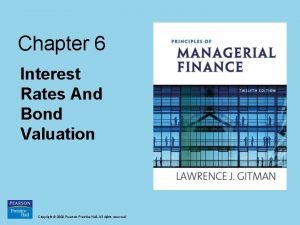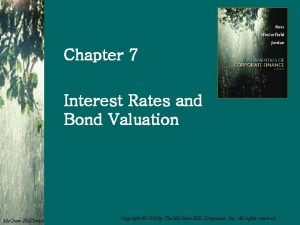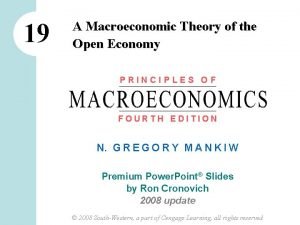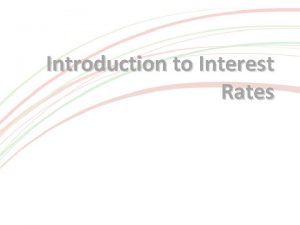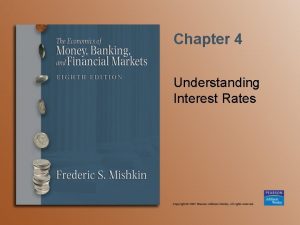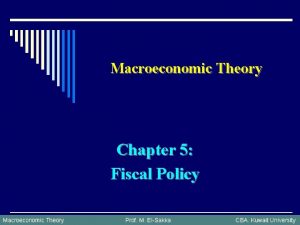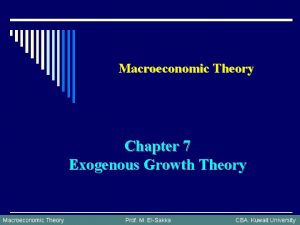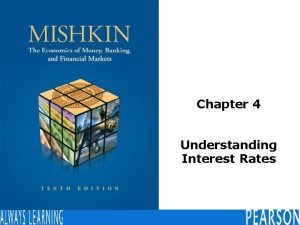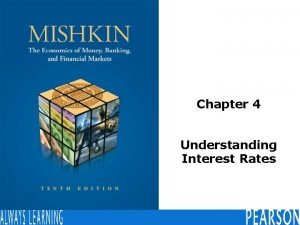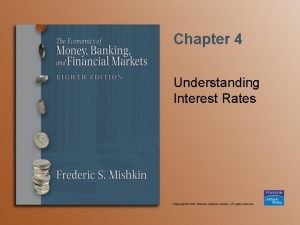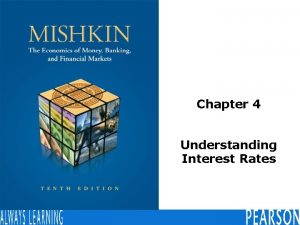Chapter 4 Classical Macroeconomic Theory Interest Rates and










- Slides: 10

Chapter 4 Classical Macroeconomic Theory: Interest Rates and Exchange Rates

Fundamental Issues 1. How is the real interest rate determined in the classical theory? 2. How do government spending and taxation policies influence the real interest rate in the classical model? 3. How is the nominal interest rate determined in the classical theory? 4. According to the classical model, how is the value of a nation’s currency determined? Copyright © 2004 South-Western. All rights reserved. 2

The Classical Market for Loanable Funds Figure 4– 1 Copyright © 2004 South-Western. All rights reserved. 3

Has the U. S. Saving Rate Really Declined So Dramatically? Sources: Richard Peach and Charles Steindel, “A Nation of Spendthrifts? An Analysis of Trends in Personal and Gross Saving, ” Federal Reserve Bank of New York Current Issues in Economics and Finance 6 (September 2000); Economic Report of the President, various issues; authors’ estimates. Copyright © 2004 South-Western. All rights reserved. Figure 4– 2 4

Government Deficits and Surpluses in the Classical Market for Loanable Funds Figure 4– 3 Copyright © 2004 South-Western. All rights reserved. 5

U. S. Inflation Rates and Nominal Interest Rates Sources: Economic Report of the President and Economic Indicators, various issues. Copyright © 2004 South-Western. All rights reserved. Figure 4– 4 6

The Value of the Dollar Sources: Economic Report of the President, 2002; Federal Reserve Bulletin (various issues). Copyright © 2004 South-Western. All rights reserved. Figure 4– 5 7

Exchange Rates Source: Federal Reserve Bank of New York, Daily Noon Buying Rates, September 6, 2002. Copyright © 2004 South-Western. All rights reserved. Table 4– 1 8

Exchange-Rate Determination in the Classical Model Figure 4– 6 Copyright © 2004 South-Western. All rights reserved. 9

The “Big Mac Index” of Currencies’ Purchasing Power *Purchasing power parity; local price divided by price in the United States. †Average of New York, Chicago, San Francisco, and Atlanta, ‡Dollars per pound, § Dollars per euro. Sources: Mc. Donald’s; The Economist. Copyright © 2004 South-Western. All rights reserved. Table 4– 2 10
 Chapter 7 interest rates and bond valuation
Chapter 7 interest rates and bond valuation Chapter 5 bonds bond valuation and interest rates solutions
Chapter 5 bonds bond valuation and interest rates solutions Chapter 6 interest rates and bond valuation
Chapter 6 interest rates and bond valuation Chapter 7 interest rates and bond valuation
Chapter 7 interest rates and bond valuation Chapter 6 interest rates and bond valuation
Chapter 6 interest rates and bond valuation Unit ratio
Unit ratio Equivalent ratios guided notes
Equivalent ratios guided notes Ratios rates and unit rates
Ratios rates and unit rates Ratios rates and unit rates
Ratios rates and unit rates A macroeconomic theory of the open economy
A macroeconomic theory of the open economy Interest rates and economic growth
Interest rates and economic growth


